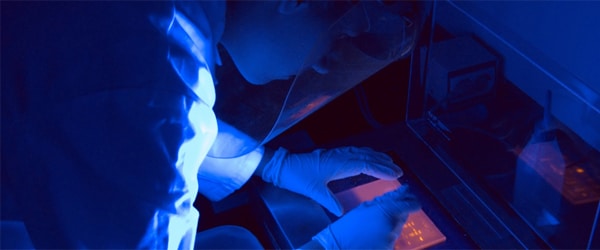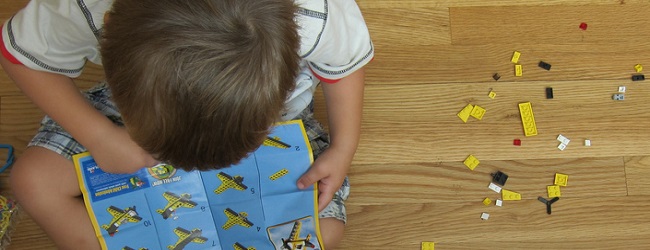I learned most of my molecular biology skills in the first lab I worked in almost 10 years ago. I realized recently that I was in desperate need of a refresher course, so I did a little bit of reading to see if I could improve the efficiency of my cloning reactions. In the process, I learned a lot about the mechanics of ligation, and was able to improve my cloning efficiency drastically. If you could use some help with ligations too, read on:
Overview
The basic idea of cut-and-paste cloning is quite simple: DNA fragments with compatible cohesive ends (or blunt ends) are combined with purified ligase in a buffer optimized for ligase function. The insert and vector fragments anneal weakly at complementary ends, and the ligase seals up these ends to create a continuous DNA molecule. To maximize the number of correct clones generated by this method, you need to optimize: 1) the ratio of insert to vector fragments in the reaction, 2) the overall concentration of DNA in the reaction, and 3) the temperature required for each successive step in ligation to occur.
Insert:vector ratio
When setting up a ligation, it’s always a good idea to use a range of insert:vector ratios to maximize your chance of getting a correct clone. A 3:1 ratio is a common starting point, and ratios ranging from 1:1 to 10:1 will likely give you the desired results. The trick here is to calculate the molar ratio using the following formula:
Insert (ng) = Vector (ng)
Insert size Vector size
So, for example, if you start with 100 ng of a 1000 bp vector fragment, you will want to use 10 ng of a 100 bp insert fragment (or 5 ng of a 50 bp insert, or 20 ng of a 200 bp insert). This feels counter-intuitive, since the smaller the insert is, the smaller the amount of DNA you use. Play with the numbers to see why this happens: 10 ng of a 50 bp fragment will contain twice the number of DNA molecules as 10 ng of a 100 bp fragment. This is why it’s important to set up ligations based on molar ratios instead of simply using the DNA concentrations.
Keep in mind that the formula above is for a 1:1 ratio, so be sure to adjust accordingly for different desired ratios.
DNA concentration
The overall concentration of DNA in the ligation mixture has a significant effect on the efficiency of the reaction. If the concentration is too low, the initial contact between and insert fragment and a vector fragment will be a rare event, resulting in very few intact plasmids. If the concentration is too high, fragments will collide more frequently, resulting in long molecules composed of many fragments. Start with around 100 ng of vector DNA, and try to keep the overall DNA concentration less than 10 ng/?L. If you want a high insert:vector ratio, you may need to use less vector DNA.
Ligation temperature
I had always wondered why ligase product notes advised incubating ligations at 14 -16°C for 2 hours or room temperature for 10 minutes. If ligation proceeds more quickly at room temperature, why would I take the time to do it at a lower temperature? As it turns out, the lower temperature reflects the average melting/annealing temperature for “sticky ends”, the overhanging single-stranded ends left after restriction enzyme digestion. Thus, a lower temperature is the optimum environment for sticky ends to anneal. After 2 or more hours at 16 °C, I like to move the reaction to room temperature for 10 or more minutes to make sure the ligase has had a chance to do its job properly, although this is not necessary. If you’re dealing with a particularly difficult or inefficient ligation, you may want to try incubating the ligation mix at 45 °C for a few minutes before adding ligase, to make sure nothing is “pre-annealed”; then add the ligase and proceed as usual.
What tips do you have for increasing ligation efficiency?






